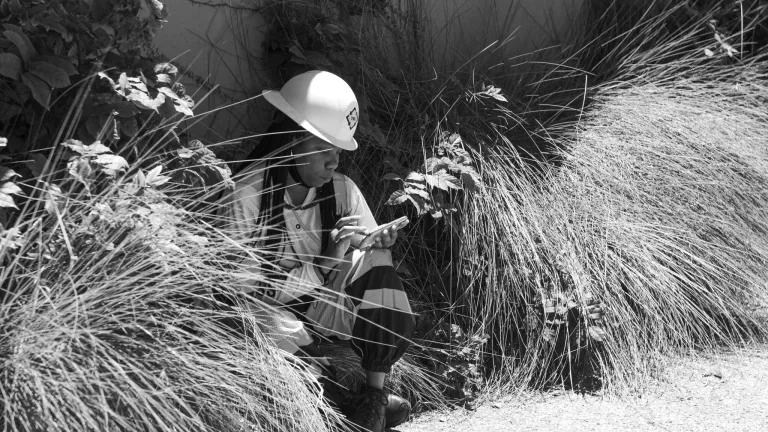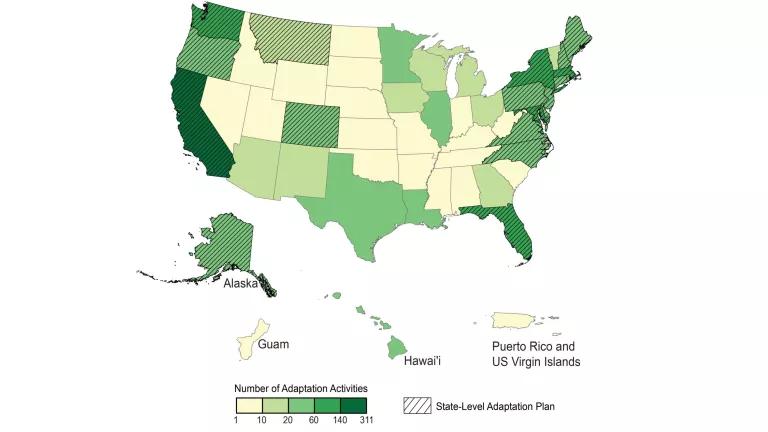There Is No Infrastructure Week Without Healthy Workers
The workers building our clean energy economy need strong, enforceable heat standards without delay.
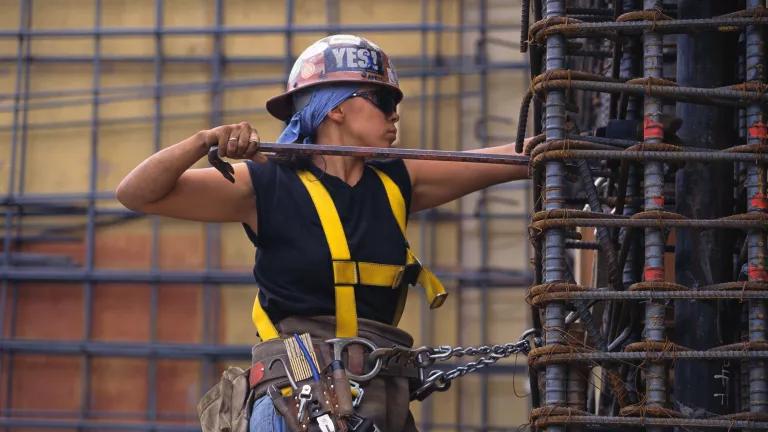
Clean energy construction and manufacturing companies have plenty to celebrate during this year’s Infrastructure Week. The Infrastructure Investment and Jobs Act of 2021 and the Inflation Reduction Act of 2022 have unleashed rapid growth in projects across the country, with more announcements coming every week. But the clock is ticking. Many of the provisions in the laws have end dates, even as some industries report trouble finding enough skilled workers. And the longer we take to reduce climate-changing pollution and increase resilience to climate impacts, the harder it will be to cope with our warming world. Despite these time pressures, employers cannot ignore the health and safety of the workers who are building our clean energy economy.
We’ve seen plenty of examples of workers suffering in the rush to get things done, such as the thousands of migrant workers who reportedly perished to make Qatar’s 2022 World Cup dreams come true. In Nepal, heat-related kidney disease has become so common among workers returning home from Qatar and other Persian Gulf countries that their government now offers free dialysis treatments.
“Oh!” you might say. “That could never happen in the United States.”
It’s true that the United States has federal and state laws to protect workers from all manner of hazards. But between insufficient funding for worker protection agencies, lawsuits galore against those agencies, union busting and wage theft by employers, misclassification of employees as independent contractors, human trafficking, and even a push to make child labor cool again, the deck is stacked against workers.
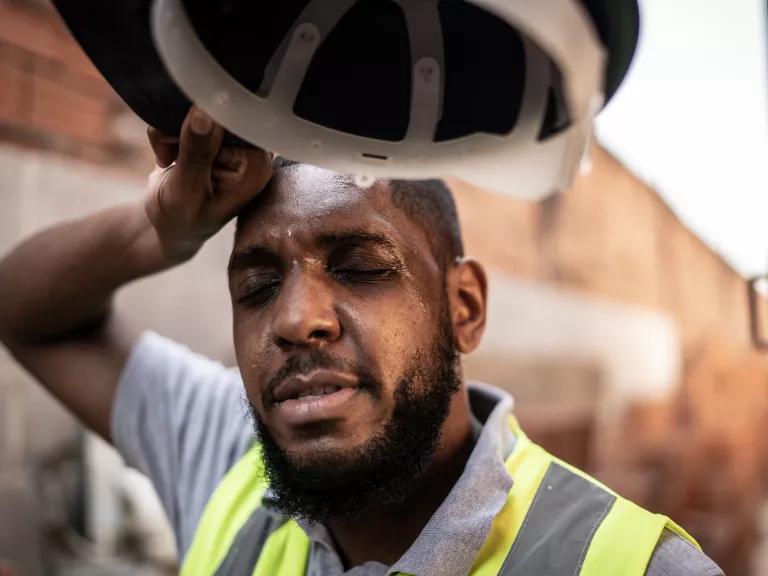
And then there’s our increasingly erratic and extreme weather. Worker protection agencies don’t have adequate regulatory tools to effectively protect people on the job from deadly heat, wildfire, and flood hazards. For example, there are no federal standards to specifically protect workers from heat, even though experts in the Nixon administration first recommended them in 1972. Five states have heat standards, but most of them only cover a subset of workers.
Unfortunately, we’ve already seen hints that industry groups will cite the need for speed on climate action as a reason to avoid or limit workplace heat standards. Examples come from comments made to the Occupational Safety and Health Administration (OSHA) after the agency initiated a heat rulemaking in late 2021.
- An insulation manufacturing group repeatedly pointed out the climate benefits of energy efficiency and said, “these benefits are important to keep in mind as regulations are contemplated for this industry.”
- A renewable energy association admonished OSHA that it has “an important role to play in achieving President Biden’s climate goals…by developing and implementing proposals that protect workers while not unduly burdening employers.”
- And a transportation construction association said the funding from the infrastructure law “should be a major catalyst for our nation’s economic recovery, but only if invested in the larger context of a favorable regulatory environment.”
The construction and extraction industry—which includes the workers who install solar panels and erect wind turbines—has one of the highest rates of heat-related illnesses, injuries, and deaths. According to government estimates, more than 5,000 construction and extraction workers missed at least one day of work from heat-related causes from 2011 to 2020. At least another 129 died. Workers of color in the construction industry are more likely to die from heat-related causes than white, non-Hispanic workers. The disparity is particularly troubling among workers born in Mexico, who from 2011 to 2016 had about double the risk of heat-related death as U.S.-born workers.
Occupational health and safety databases tend to underestimate the true toll of hazards such as heat. Regardless, one heat-related death is too many. Especially when these deaths are preventable with commonsense measures such as adequate drinking water, cool-down periods in a shaded spot, and a written emergency plan that everyone knows how to follow.
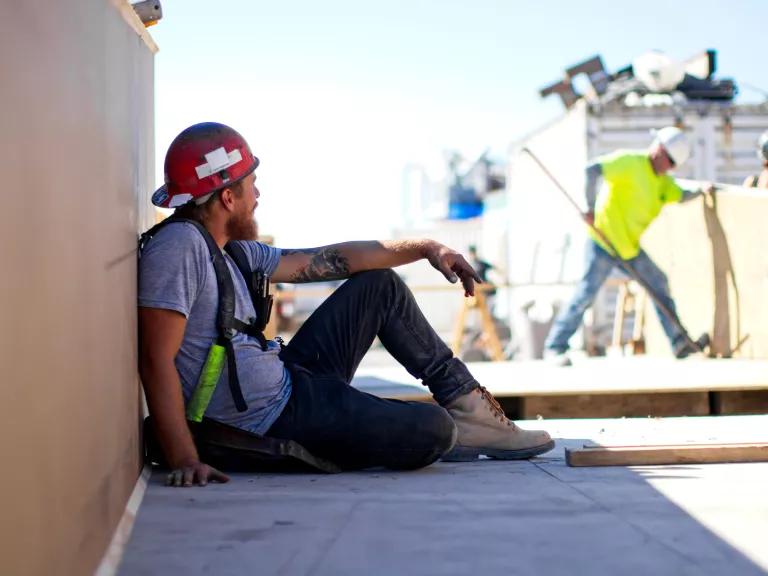
Workers who are protected from extreme heat aren’t just healthier; they’re more productive. Anyone who has gone for a run or mowed the lawn in a heat wave knows it doesn’t take long to feel sluggish. Workers who are dehydrated and overheated slow down and may be prone to lapses in their memory and ability to solve problems. In 2021 alone, heat exposure caused the estimated loss of more than 2.5 billion hours of labor in the U.S. agriculture, construction, manufacturing, and service sectors.
So, as we celebrate the recent laws that have made this Infrastructure Week special, let’s give workers something to cheer about. Infrastructure workers urgently need OSHA to finish the job they started in 2021 by finalizing strong, enforceable workplace heat standards without delay. And in the meantime, employers should ensure workers have the water, rest, and shade they need to stay healthy, be productive, and do their best day after day.



